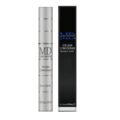
Demand generation is often referenced when discussing inbound marketing yet regularly misunderstood. If you are confused by this inbound marketing term, rest assured you are not alone in your crowd. Here’s an inside look at how demand generation works.
Demand Generation Explained
Demand generation is the process that businesses and advertisers use to generate interest in a value offering, be it a service or a product. Demand generation develops awareness through a market funnel that begins with an initial point of contact with the target audience.
Effective demand generation centers on a comprehensive understanding of customer preferences. Those preferences are reflected in the approach to marketing as well as the product or service being marketed.
Demand generation campaign managers develop a thorough understanding of the brand offerings before developing marketing material. These professionals are tasked with the following:
- Pinpointing new opportunities for marketing
- Optimizing the campaign
- Executing the campaign
- Translating points of connection across multiple channels into actual sales
The best demand generation campaigns are characterized by the development of accurate customer journey maps that guide prospects from the top of the sales funnel to the bottom.
An analysis of TV-watching trends will certainly help your business market effectively yet commercials alone will not suffice. An ongoing comprehensive demand generation effort through connected TV (CTV), web channels, and offline channels is necessary.
The Purpose of Demand Generation
The aim of demand generation is implied in its name in that it is meant to generate demand. The age-old question of whether a tree that falls in the woods makes a noise if no one is in its vicinity serves as an analogy for the importance of demand generation in making the target audience aware of a company and its value proposition.
The challenge lies in maximizing demand through a reasonable investment in inbound marketing. Targeting customers through brand awareness campaigns pinpoints those who need or desire the value offering, generates those coveted high-quality leads, and ramps up the chances for conversion.
The Progression of Demand Generation
Demand generation is a process that progresses through distinct stages. The initial stage is characterized by heightening awareness of the product or service with the target audience. Engaging those interested targets generates the leads necessary for conversions.
Once customer awareness is raised, ongoing engagement is necessary to advance interest in the value offering, spurring those targets to uncover additional information. The best demand generation campaigns inspire targets to take meaningful action to learn more about the value offering.
Examples of such actions include:
- Visiting the homepage to find out more about the company
- Scrolling through a product/service page
- Filling out a contact form
- Directly contacting the business through a phone call or email message
Strategies for Effective Demand Generation
Demand generation is most effective when conducted through a multilayered approach. As an example, demand is generated through the following methods and strategies:
- Video content
- Blogs
- Strategic partnerships with other relevant businesses
- Direct mail
- Public relations campaigns
- Giveaways
- Contests
- Demonstrations
- Free trials
- Exhibitions
Tinker with your business’s approach to demand generation through each of these engagement methods to determine the optimal blend for your business. Recognize the fact that certain demand generation methods are better for businesses in your niche or industry, move forward accordingly, and do not hesitate to alter your approach based on the results of your demand generation campaign.
Analyze the Demand Generation Metrics
Demand generation is an evolving process that requires ongoing analysis. Resist the temptation to rest on your laurels after an initial successful demand generation campaign. Continue to study your demand generation metrics after each successive campaign to get a sense of what is working best and what needs improvement.
As an example, the demand generation metric of customer lifetime value is the money customers are inclined to spend when associated with the brand. Cost per acquisition is the cost of obtaining a paying client through a certain marketing channel.
Even the metric of average purchase that averages out the value of customer purchases through each demand marketing channel should be analyzed with regularity. Get a sense of which channels are performing the best, make changes to your demand generation appropriately, revisit each metric and you’ll gradually increase demand for your value offering.
When in doubt, focus on the metric of demand generation cycle length. This metric measures the average length of time from the point of identifying a lead to converting that lead into a customer. The aim is to decrease this period, shortening the gap between the initial point of contact through a demand generation effort and conversion in the form of a sale.









Leave a Reply